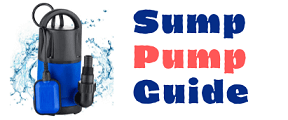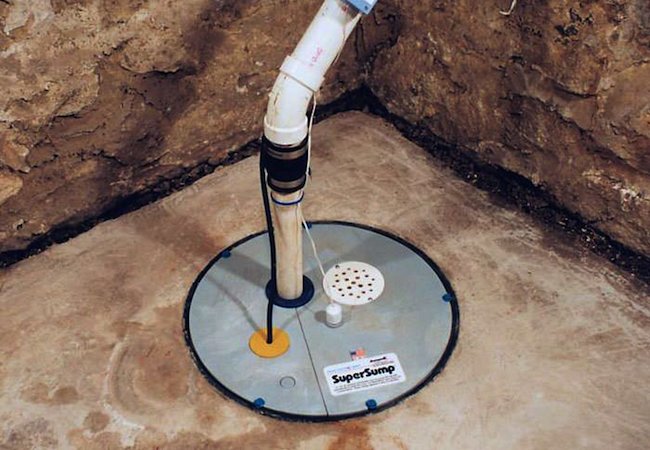Sump pumps are part of the first line of defense against flooding in homes and other buildings. These systems pump water out of basements, crawl spaces, or underground areas where groundwater collects.
The main purpose of a sump pump is to remove water that has accumulated in an area below ground level. A sump pump is usually installed near the lowest point of the basement floor. It is connected to a drainage pipe that leads outside of the house.
A sump pump works by creating a vacuum. Water flows into the pump through a drain pipe. As soon as it reaches the bottom of the pump, the water creates a suction force that pulls air out of the system. The air then rises up through the drainage pipe.
Read More: What Does a Sump Pump Do?
How to Choose the Right Sump Pump for Your Home?
There are many different types of sump pumps on the market today. Some are more effective than others at removing water from basements and crawl spaces. You should consider several factors before purchasing one.
First, you need to determine how much water will accumulate in your basement or crawl space. If you have a lot of rain during the year, you may have to install a larger pump.
Next, you must decide whether you want a submersible or surface-mounted sump pump. Submersible pumps are placed directly under the foundation of your home. Surface-mounted pumps are attached to the side of the structure. Both types work well, but their installation requirements differ.
Finally, you need to factor in the size of the pump you need. Smaller models are easier to install, but they won’t be able to handle large amounts of water. Larger pumps are more powerful, but they require more maintenance.

If you live in a flood zone, you should also consider buying a backup pump. Backup pumps are used only if the primary pump fails. Most homeowners don’t realize that their sump pumps aren’t always working.
You should also check with local authorities about the type of sump pump you need. In some states, you are required to buy certain types of pumps. For example, California requires all new construction to include a backflow prevention device.
You can find a wide variety of sump pumps on Amazon.com. Many people choose to purchase them online because they save money over buying them locally. However, you should make sure that the model you select meets your needs.
What are the different types of Sump Pumps?
Submersible Sump Pump:
The submersible pump is placed directly beneath the foundation of the house. It uses a motor to create a suction force that draws water out of the basement.
Pedestal Sump Pump:
These pedestal pumps sit atop the basement. They use a float switch to activate when water begins to collect in the basement. Once activated, the pump starts pumping water out of the basement until there is no longer any water left.
What is the gallons/hour in Sump Pump?
- The amount of water that a sump pump removes depends on its capacity. You can measure this using the gallons per hour (GPH) rating. This number indicates how quickly the pump can remove water from a particular volume of water.
- For example, a 1,000 GPH pump can remove 1,000 gallons of water every hour. This means that the pump can empty a 10,000-gallon tank in just one hour.
- In general, you should look for a pump that has a higher GPH rating. This way, you’ll be able to get rid of more water in less time.
What is the HP in Sump Pump?
- Another important measurement to keep in mind when choosing a sump pump is horsepower. The horsepower rating tells you how efficient the pump is at moving water.
- Pumps with high horsepower ratings tend to be more energy-efficient. They use less power and produce fewer vibrations.
- Pumps with lower horsepower ratings are usually cheaper. They cost less to operate and generate less noise.
How do I know what size sump pump I need?
- There are two main sizes of sump pumps: residential and commercial. Residential sump pumps typically range from 2,500 to 5,000 GPH. Commercial sump pumps are generally rated at 3,000 to 6,000 GPH.
- A good rule of thumb is to multiply the square footage of your house by 4.5. That gives you an idea of how many gallons of water you’re likely to collect in your basement each day.
- That figure then determines which kind of sump pump you’ll need. If you have a small house, you may not need a very powerful pump. However, if you have a larger house, you might need a bigger pump.
How much does it cost to install a sump pump?
- Depending on where you live, installing a sump pump can be relatively inexpensive or quite expensive. Some municipalities require homeowners to install sump pumps as part of their building permits. Others don’t require them.
- If you decide to buy a sump pump yourself, you’ll pay anywhere between $100 and $1,200. A professional installation will run around $300-$600.
Read More: How Much Does a Sump Pump Cost?
How long do sump pumps last?
- Sump pumps are designed to work for years without maintenance. In fact, most manufacturers recommend replacing your sump pump after five years.
- However, you shouldn’t wait too long before replacing your pump. Your sump pump could fail at any time. If it fails while you’re home, you won’t notice anything unusual. But if it fails during a storm, you could end up flooding your entire basement.
Read More: How Long Does a Sump Pump Typically Last?
Which type of sump pump is best?
- You also need to consider whether you want a submersible pump or a pedestal pump. Submersible pumps are better because they’re quieter and easier to maintain.
- Submersible pumps are more durable and powerful than a pedestal pumps.
- On the other hand, pedestal pumps are located outside the sump pit. They’re easy to clean and repair but can be noisy.
- Submersible pumps are more reliable when drawing water from the basement.
Final Word:
When selecting a sump pump, make sure you choose one that meets all of your needs. You need a strong pump that works well and lasts for a long time.
Make sure you select a pump that’s appropriate for your home. Don’t rely solely on price. Look for features like horsepower, GPH, and warranty length.
The information provided here is meant to help you find the right sump pump for your needs. We hope this article was helpful!




